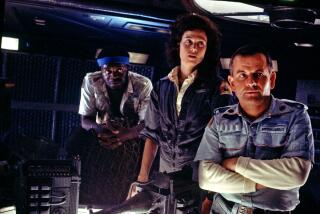How ‘Spider-Man: No Way Home’ re-creates Doc Ock in all his tentacled glory
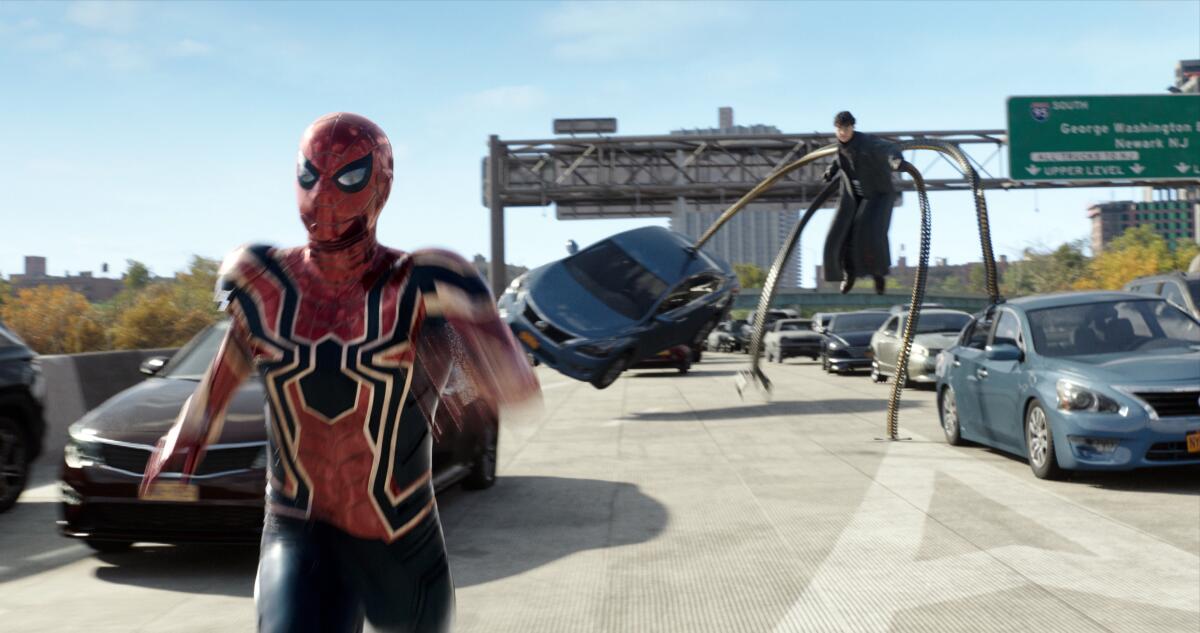
For someone with even a rudimentary knowledge of visual effects, you would assume a film featuring somewhat recent CG-enhanced characters would be easier to bring to life than a project starting completely from scratch. That simply wasn’t the case for “Spider-Man: No Way Home.”
Villains such as the Lizard (voiced by Rhys Ifans) and Electro (Jamie Foxx) appeared on screen less than a decade ago, but there were no plug and play reference files to assist in their re-creation for 2021. In fact, according to visual effects supervisor Kelly Port, pretty much everything had to be re-created.
“Even if we were to have access to archives of those old files, which I don’t think we really did, they just basically are gone, we would have to re-create it anyway, simply because of the technology,” Port says. “It was different software; it was different computers; it was different formats and a whole host of reasons why we couldn’t have used what was done prior.”
The $1-billion blockbuster also features the return of the Green Goblin (Willem Dafoe) and Doctor Octopus (Alfred Molina). Those villains faced off against Tobey Maguire’s web-slinger back in 2002 and 2004, an even older era of computer-generated software. For Doc Ock, not only did they recruit the same visual effects artist who animated him in “Spider-Man 2,” but they used modern software to completely re-create his complex and menacing mechanical tentacles.
“They had built some practical Doc Ock arms back then that were puppeteered and we based our digital versions off those,” Port says. “They were able to take those out of the archive and take nice photos for us and get good reference.”
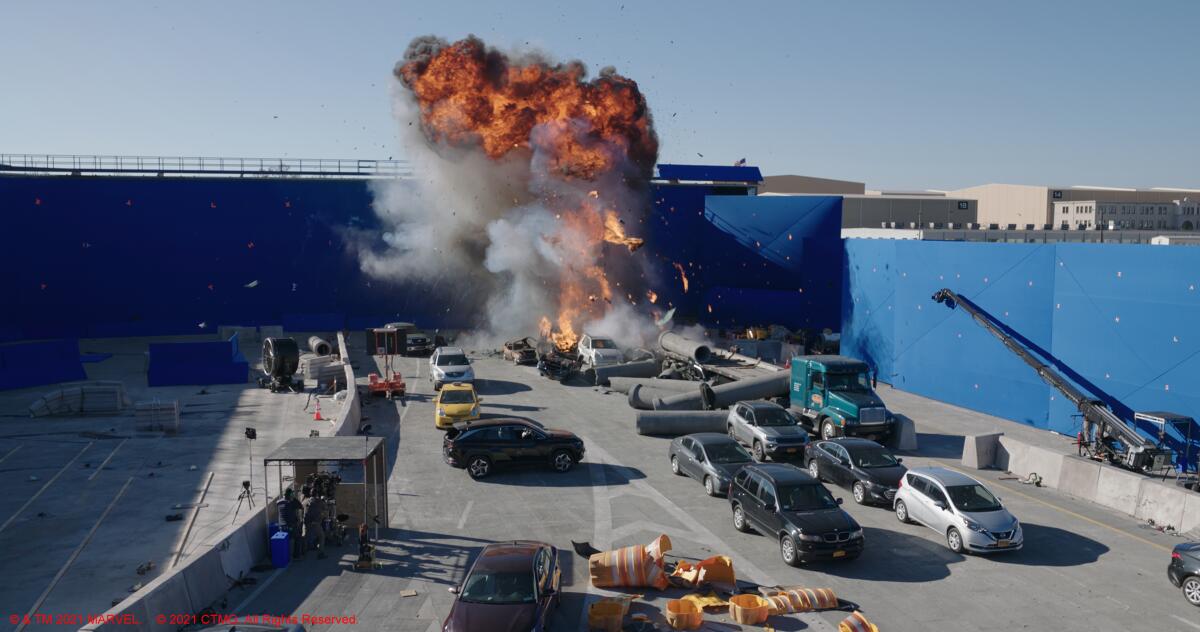
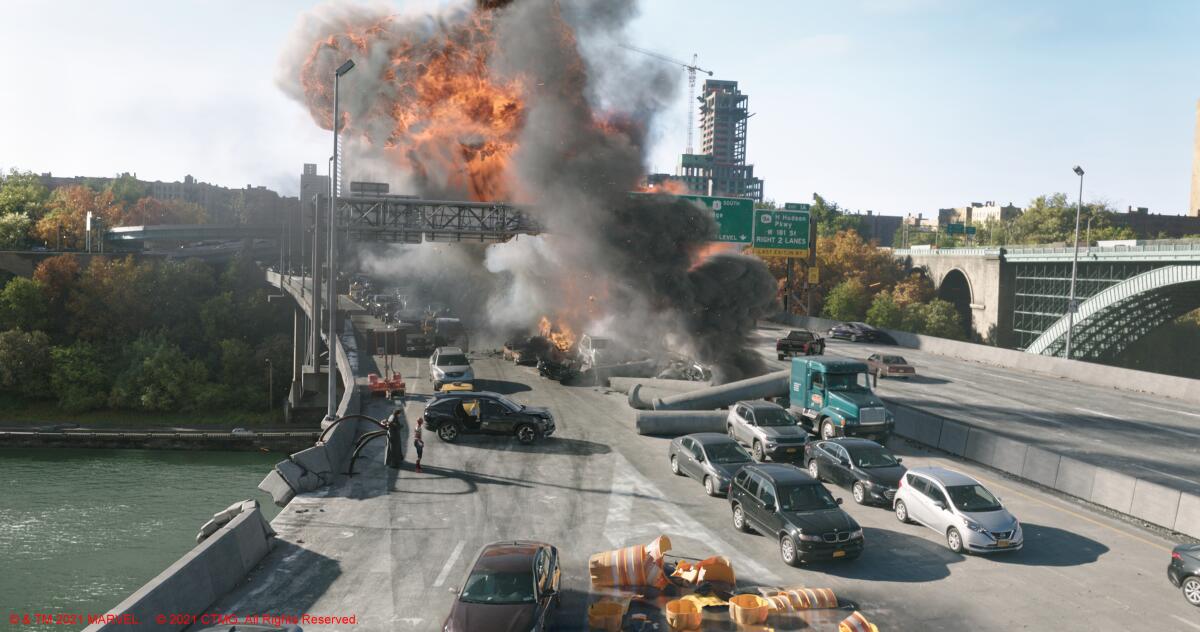
Doctor Octopus is the first villain who faces off against Tom Holland’s present-day Spider-Man in an extended action sequence set on New York’s Alexander Hamilton Bridge. The sequence was one of the more difficult ones for the production because it involved live-action photography from the set in Atlanta, rotoscoping and an enormous three-square-mile digital environment build. It was so tricky that not only is Spider-Man often completely CG in the scene, but Molina’s character is as well.
“For a vast number of shots in that sequence, he was fully CG,” Port says. “Mostly because a lot of times, how we ended up shooting it was quite considerably longer originally. And we took that down, tightened it up, story-driven reasons, just shuffling shots around, things like that. And for continuity reasons, we had to change the screen direction. So, a lot of shots that were originally photographed plates ended up being digital at the end of the day.”
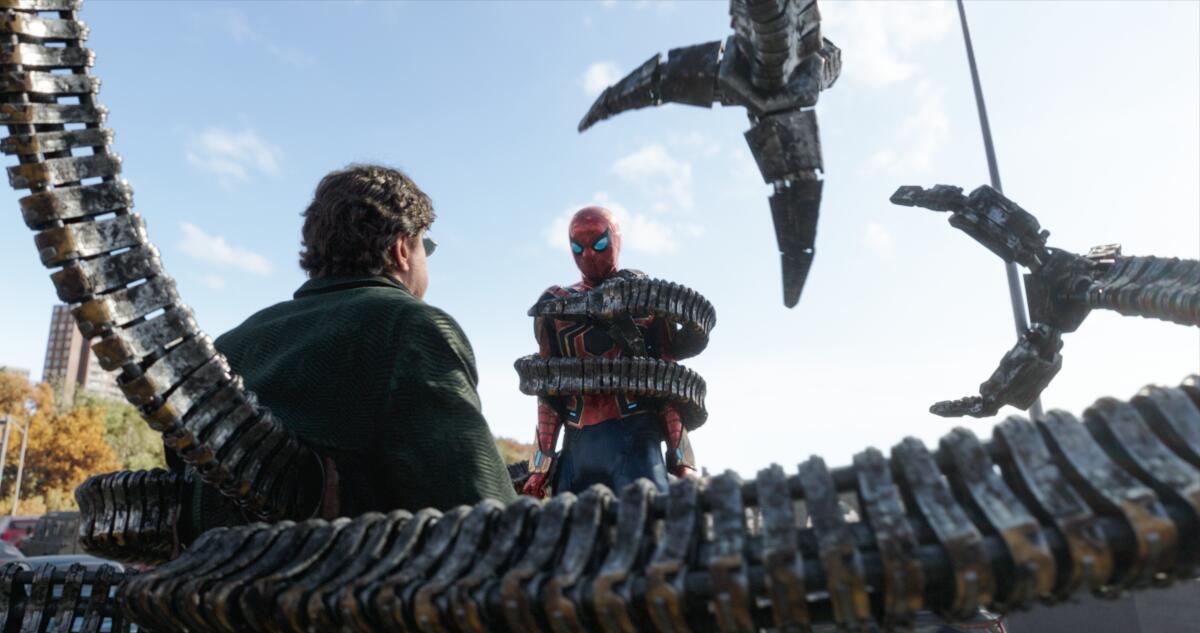
Overall, Port says “No Way Home” has close to 2,500 visual effects shots. He notes that’s pretty crazy considering that “back when I worked on ‘Titanic,’ when it was one of the biggest visual effects films of its day, I think having around 400 shots was a big deal. It’s interesting that visual effects touches almost every shot now. I think there’s 80 shots in the film that we didn’t touch.”
Additionally, one visual effects company was responsible for de-aging Molina, so he resembled his character plucked from a timeline 17 years ago. Port notes, “SSVFX did that work and they did a great job. We wanted to just try to get him closer look-wise to how he looked in the previous film. They were able to keep all the original detail, the original photography, but sort of get him a little bit younger-looking.”
More to Read
From the Oscars to the Emmys.
Get the Envelope newsletter for exclusive awards season coverage, behind-the-scenes stories from the Envelope podcast and columnist Glenn Whipp’s must-read analysis.
You may occasionally receive promotional content from the Los Angeles Times.

